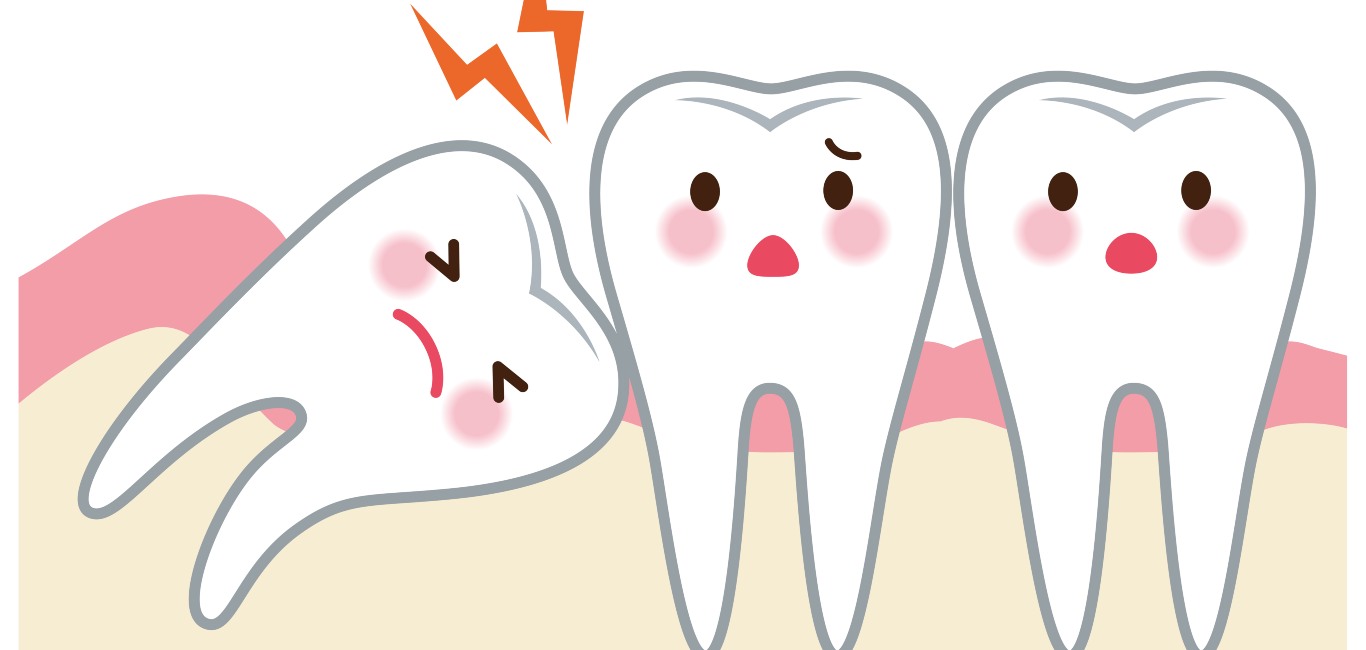
Niranjani Sundaram (29), IT employee from Chennai, Tamil Nadu, experienced dental issues as her wisdom tooth was on its way. She started experiencing mild pain in her lower jaw about four years ago, which she initially thought was due to tooth decay or cavity. “My pain gradually increased in the next few days, and I had headaches,” says Sundaram. Moreover, she had difficulty chewing food and speaking.
She went to the dentist after swelling in her jaws. An x-ray revealed that it is the wisdom tooth that is horizontally tilted and does not have the space to come up through the gums. “My wisdom tooth was impinging the adjacent tooth and that caused the cavity,” she says.
She was then prescribed antibiotics and painkillers for three days and asked to remove the wisdom tooth soon after the swelling subsided. It took a week for the gums to heal. As the cavity was detected in an earlier stage, she was able to save the adjacent tooth.
What is a wisdom tooth
These are the last of the teeth to erupt usually between the age of 17 and 25. They are a set of four teeth (two in the upper jaw and two in the lower jaw).
It was believed that as one reaches adolescence, one becomes mature and gain wisdom, hence, the adult third molar (back tooth) got the name wisdom tooth.
Most of the people have four wisdom teeth, however, one or more may be missing in some. In some people, these teeth do not appear at all or partially appear in the jaws.
Impact of limited space
An impacted wisdom tooth occurs when there is a lack of space in the jaw or when it comes through the gums in an incorrect position. This can damage the adjacent tooth, cause pain and sensitivity, and difficulties with brushing and flossing.
A 2021 study published by the Journal of Nepal Health Research Council showed that the impacted tooth in the lower jaw is the main cause of caries in the tooth next to it.
Source of bacterial infection
Erupting of the wisdom tooth correctly in its position enables one to chew the food better, whereas, improper position can accumulate food particles which can eventually cause tooth cavity and bad breath.
The infected wisdom tooth acts as a source for bacterial growth. It can result in inflammation of the gums around the partially erupted tooth. This condition is known as pericoronitis.
“The bacteria may enter the bloodstream and release toxins. It causes systemic conditions like skin disorders, arthritis, pulmonary disorders, and cardiovascular conditions,” says Dr Dinakar Jayakumar, Vice Principal of Rajas Dental College from Tirunelveli, Tamil Nadu.
Oral and systemic consequences
Experts say that a cyst can form over or near the impacted wisdom tooth. This may damage the bony structure around the tooth or the roots of the neighbouring tooth, leading to a condition called dentigerous cyst. When the wisdom tooth leans towards the cheek, it rubs against the skin and leads to ulcers.
Dr Arun Dheepan, dentist and founder of Comfort Dental Care, Coimbatore, Tamil Nadu, says, “Individuals with infected wisdom teeth may have swollen cheek, swollen lymph nodes (a part of immune system) and fever.”
“Some individuals may have pain radiating to the head, ear, neck, and shoulders due to impacted wisdom teeth. It is usually resolved after the removal,” adds Dr Jayakumar.
Purpose of removing wisdom tooth
Oral structure varies from person to person, and the position of the wisdom tooth inside the bony structure differs. Not all wisdom teeth need to be removed or cause difficulties. However, if there is pain, infection, swelling, and the presence of cysts, it requires removal.
According to American Associations of Orthodontists, wisdom tooth impaction may be hereditary. The impacted tooth tends to push other teeth into irregular positions which affects the facial appearance.
“This tooth is removed as a part of braces (alignment of teeth) treatment to create space for other teeth to move back and prevent relapse,” says Dr Jayakumar.
Role of x-rays
“Our mouth undergoes changes throughout our lifetime. The wisdom tooth changes its position every year while trying to come out through the gums,” he says.
One must regularly visit the dentist for mouth inspection and get x-rays if necessary to determine the management plan. X-rays are used to assess the position of the wisdom tooth, adjacent nerves, bony structure, tooth shape, and number of present in the wisdom tooth.
Management of impacted wisdom tooth
When the wisdom tooth comes out through the gums, it becomes even more important to maintain good oral hygiene. While brushing, ensure that the bristles reach the back teeth. If there is difficulty in opening your mouth, using a toothbrush with a small head can help. Keeping the mouth partially closed while brushing will help the bristles to reach the cheek sides of the molars.
Brushing is not easy when one has gum inflammation and pain in the wisdom tooth. In such conditions, mouthwash should be used to maintain oral hygiene.
Also read – Oral benefits of mouthwash.
One may experience mild discomfort during the eruption of the wisdom tooth. However, if the pain persists, it is better to consult a dentist.
The doctor may prescribe antibiotics and painkillers initially to reduce the infection and pain. However, it is better to remove the tooth if there is a risk of cavities and recurrent infections.

















